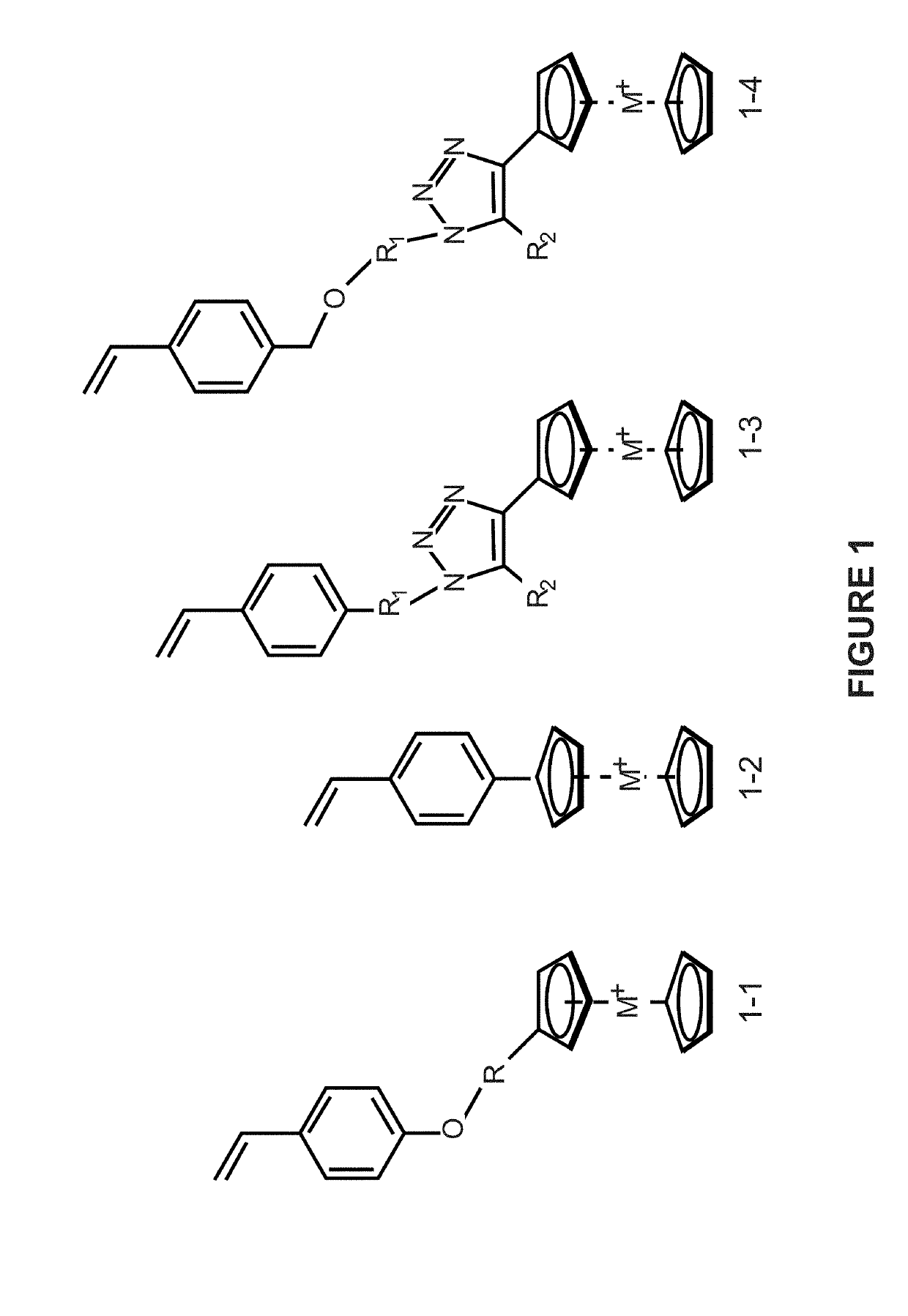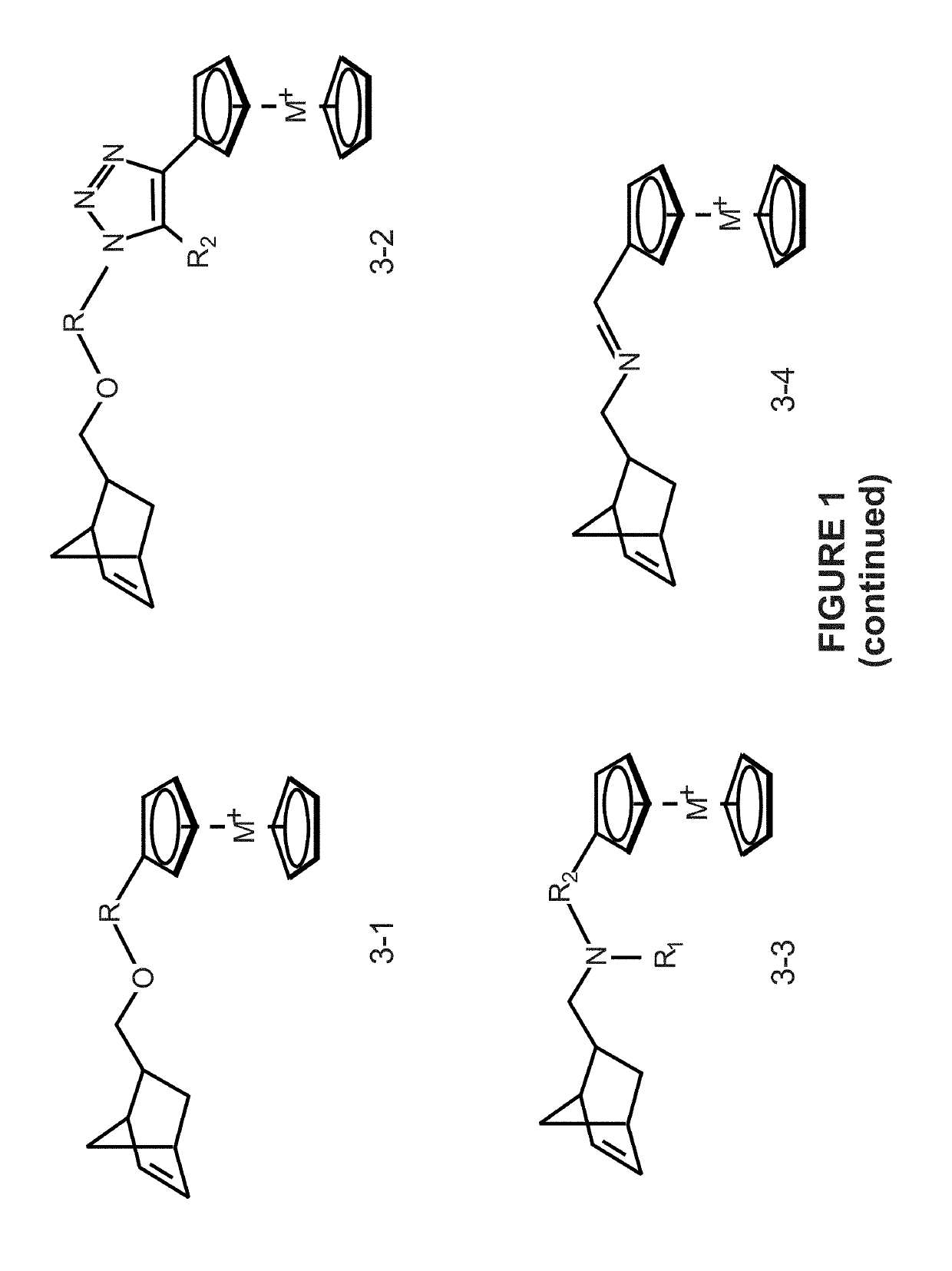Preparation of metallocene containing cationic polymers for anion exchange applications
a technology of anion exchange and cationic polymers, which is applied in the field of anion exchange preparation of metallocene containing cationic polymers, can solve the problems of anion exchange membranes that are not soluble in polar aprotic solvents, etc., and achieves enhanced conductivity, facilitate ion transport, and facilitate ion exchange
- Summary
- Abstract
- Description
- Claims
- Application Information
AI Technical Summary
Benefits of technology
Problems solved by technology
Method used
Image
Examples
example 1
[0060]This example is to prepare a cyclooctene based cobaltocenium-containing monomer (see FIG. 2). A typical procedure for the synthesis is described as follows: 5-azidocyclooct-1-ene and ethynylcobaltocenium hexafluorophosphate (mono-substituted or multi-substituted) are dissolved in tetrahydrofuran (THF) / H2O, followed by adding copper sulfate and sodium ascorbate under the protection of nitrogen gas at 0° C. The resulting mixture is stirred at room temperature overnight to yield cyclooctene based cobaltocenium-containing monomer.
example 2
[0061]This example is to prepare cyclooctene based cobaltocenium-containing monomer based copolymers (see FIG. 2). The monomers are polymerized by ROMP using Grubbs 2nd catalyst and N,N-dimethylacetamide as solvent at 65° C. under nitrogen. The obtained polymers were precipitated in methanol several times to remove catalysts and other impurities.
example 3
[0062]This example is to improve the mechanical and alkaline stability for homopolymers / copolymers (see FIG. 3 at a). The current disclosure demonstrated that hydrogenation of backbones is an efficient way to improve the properties of these metallocene polymers. As seen in FIG. 3, the copolymers could be hydrogenated using excess tosyl hydrazide and N,N-dimethylacetamide as solvent at 100° C. under nitrogen or under hydrogen gas. The resulting polymers are precipitated in methanol three times to remove impurities. Similarly, hydrogenation can be applied to other multi-substituted cobaltocenium copolymers to prepare AEMs, like dmccAEM and omccAEM shown in this FIG. 3.
PUM
| Property | Measurement | Unit |
|---|---|---|
| Temperature | aaaaa | aaaaa |
| Electrical conductivity | aaaaa | aaaaa |
| Polarity | aaaaa | aaaaa |
Abstract
Description
Claims
Application Information
 Login to View More
Login to View More - Generate Ideas
- Intellectual Property
- Life Sciences
- Materials
- Tech Scout
- Unparalleled Data Quality
- Higher Quality Content
- 60% Fewer Hallucinations
Browse by: Latest US Patents, China's latest patents, Technical Efficacy Thesaurus, Application Domain, Technology Topic, Popular Technical Reports.
© 2025 PatSnap. All rights reserved.Legal|Privacy policy|Modern Slavery Act Transparency Statement|Sitemap|About US| Contact US: help@patsnap.com



